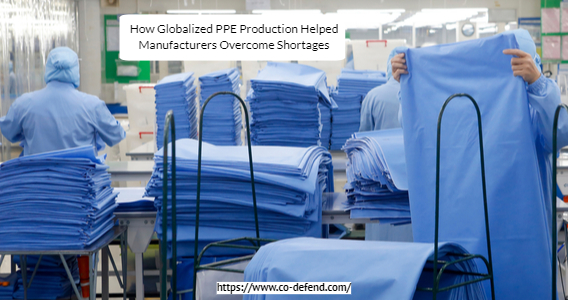Hospitals and nursing homes across the U.S. are struggling to handle the new wave of coronavirus cases following the holiday season. The overwhelming number of COVID-19 deaths have scarred health workers nationwide. Americans are dying in higher numbers. And it’s not just because of the virus. Deaths due to diabetes, stroke, and hypertension also rose significantly, The New York Times reported.
The overall deaths in the U.S. reached levels not seen for 75 years, according to the National Center for Health Statistics. All these have created extraordinary pressure on the healthcare industry. That means hospitals and medical device manufacturers alike are reeling under the crisis. The pandemic also triggered unprecedented innovation and collaborations across the industry.
Medical devices and personal protective equipment have been short in supply since the pandemic’s beginning. The medical device industry needed a strategic production approach to deal with such situations. In this blog post, we’ll discuss how a globalized production is helping overcome the medical device shortage. Keep scrolling to know how this strategy works.
The growth of non-traditional exporters
The global trade of personal protective equipment and medical devices has more than doubled since 2008. Significant increase in demands, improving healthcare, and aging populations have been the biggest drivers of this growth. Over this period exports from developed markets have increased by roughly 45 percent.
However, exports from emerging economies like China and Korea have grown 100 percent. Even during the coronavirus pandemic, Asian countries have been the biggest PPE exporters. Whether it’s face masks manufacturers or PPE suppliers, China has emerged as a global leader. In fact, most of the essential medical equipment like facemasks, disposable gloves, and gowns are produced predominantly in developing countries. At the same time, developed nations have continued to lead the export of medical devices.
But some emerging economies have managed to grow in both categories. For instance, for products like N95 masks, China has replaced several traditional exporters. Economic cooperation between countries has also fostered this trend.
Continued dominance of leading suppliers
The global production by medical device manufactures has increased substantially over the past decade. But trade in the medical device industry is led by a handful of big multinational companies. They continue to dominate the medical device supply chain. These companies have built global platforms to use the new demand to their advantage.
Top companies, including bulk PPE suppliers in the USA, have diversified remarkably. It has helped them leverage the complementarities in the global device supply chain. They have been seamlessly operating from multiple locations around the world.
Dealing with severe shortages during COVID-19
At the beginning of the pandemic, countries like the U.S. and the U.K. faced a severe shortage of personal protective equipment of all kinds. It prompted scaled up production in developing markets such as China and India. China has since been the largest source of import for the U.S. and European Union countries. However, in the first two months of 2020, Chinese exports declined. That’s the time when the country was facing a surge in domestic demands. It was due to China’s fight with the coronavirus.
International & inter-organizational collaborations
Medical device manufacturers unprecedented ramping up of production in the thick of the pandemic. It was challenging even for the big companies since it was a kind of uncharted territory. It meant companies needed expertise in some areas, which prompted inter-firm partnerships. These collaborations have mostly been strategic partnerships. For instance, Ventec Life Systems partnered with GM to meet the latter’s production. GM had to produce a significant number of ventilators as part of the Defense Protection Act requirements.
Increased demands also spurred innovation among face masks manufacturers and medical device makers. Such innovations, too, were largely driven by collaborations. The British vacuum giant Dyson, for example, partnered with TTP to design new ventilators for Britain’s NHS in just 10 days. These kinds of collaborations across countries have been one of the greatest drivers of production and innovations in the pandemic era.
Wrapping up
COVID-19 has, among many other things, triggered a dramatic shape-shift in the medical device and PPE industries. From the emergence of non-traditional PPE manufacturers to inter-firm partnerships, the pandemic set in motion a new era. However, the top medical device and PPE manufacturers continue to dominate the market at large. At Co-Defend, one of the most trusted bulk PPE suppliers in the USA, we saw this transformation up close. We, too, have evolved remarkably over the past year to meet our customers’ demands.
